


15-16 2022 BANGKOKTHAILANDSEPTEMBER LIVE EDITION APUEA Magazine 2022September/No.14 Asia Pacific Urban Energy Association Asia Urban Energy Assembly 7TH GLOBAL DISTRICT ENERGY CLIMATE AWARDS Organized by Gold Sponsors Supported by


2
INTERVIEW WITH PETER LUNDBERG, EXECUTIVE DIRECTOR, ASIA PACIFIC URBAN ENERGY ASSOCIATION (APUEA) by APUEA Secretariat

INTERVIEW WITH MOHANNAD KHADER, COMMERCIAL & DEVELOPMENT DIRECTOR, QATAR COOL by APUEA Secretariat
INTERVIEW WITH LARS HUMMELMOSE, MANAGING DIRECTOR AT THE DANISH BOARD OF DISTRICT HEATING (DBDH) by APUEA Secretariat
INTERVIEW WITH PETER ANDERBERG, FOUNDER, AND CEO AT HEAT ACADEMY, NORDIC HEAT & HEATNET GLOBAL by APUEA Secretariat

EVENT
Content 38201612263639 GLOBAL DISTRICT ENERGY CLIMATE AWARDS 2021: WINNERS by Dr. Robin Wiltshire, Chairman of the Evaluation Panel, Global District Energy Climate Awards
APUEAMEMBERCALENDARDIRECTORYMEMBERSHIP FORM 32
APUEA Magazine 14 3
Mikael Jakobsson
 AsiaPressident,Pacific Urban Energy Association (APUEA)
AsiaPressident,Pacific Urban Energy Association (APUEA)
As if climate change and the COVID-19 pandemic weren’t challenging enough for humanity, Russia’s full-scale war and invasion of Ukraine has been going on for two months by now, with both direct and indirect impacts on the Asia Pacific region. There are always two sides of a coin, and there are many reasons for conflicts. However, respecting human rights and state’s sovereignty are fundamental. Anything else is
Theunacceptable.conflictis resulting in increased oil and gas prices globally, and is impacting the energy sectors across the Asia Pacific. In addition, since the oil crisis in the 70s, the importance of energy security hasn’t been more evident than now. Considering fossil fuels being subject to blockade and embargo resulting in increasing global prices and, in the worst-case shortage, it is safe to say that the world would have been much better off by following our constant preaching for increasing and accelerating the development of sustainable integrated energy systems.
Energy conservation and energy efficiency. Utilization of local clean resources. System integration, including both sector coupling, integration of energy systems, and municipal utilities for energy symbiosis. Transition to clean energy supply. These actions contribute to systemic efficiency, including energy efficiency, decarbonization, and energy security – all enabled by District Energy
Oneschemes.ofthe

core benefits of District Energy systems, besides enabling systemic efficiency, is the feature of being future proof to energy sources. Once the infrastructure is in place, it is possible to change cooling, heating, and/or electricity generation method, and one is not necessarily locked to a certain technology as in the case with individual ACs or heaters. Furthermore, District Energy systems unlock the potential for costeffective renewable energy integration, energy storage, co-, and tri-generation. An extraordinary heatwave has just hit India. March was the hottest in a century,
and with temperatures reaching 50 degrees, April was the third hottest in more than a century. The peak power demand reached a record high of close to 210 TW. The extreme heat has already resulted in both fatal heat strokes and reduced wheat yields. Extreme heat requires sustainable cooling – both energy efficient and driven by renewable energies. District Cooling isn’t always feasible, but when it is it should be the choice of cooling technology as the efficiency gains and system benefits are outstanding. We cannot stress enough the importance of energy (cooling) planning and sound feasibility studies to take any opportunity possible to apply District Cooling.
Besides sustainable urban energy, APUEA is also supporting decarbonization and energy efficiency in industrial parks, with a focus on industrial energy symbiosis, distributed generation, and district energy. In addition to industries’ ambitious sustainability targets, NDCs (and related policies), and increasing energy prices have accelerated industrial energy efficiency projects in the course of the year. APUEA will increase its industrial energy activities, as a response to direct requests from members and industries. Travel restrictions are now being relaxed in most economies across the region, and while we see more physical activities taking place, we can also sense a surge for more actions from both the public and
private sectors. The APUEA secretariat is planning some twenty events in 2022, almost doubling its activities compared to a normal year. Besides more seminars and workshops, APUEA Academy activities are also expected to increase during the Weyear.are
looking forward to hosting the 2nd Asia Urban Energy Assembly and the 7th Global District Energy Climate Awards, 15-16 September 2021 in Bangkok Thailand. The event will be held in conjunction with the ASEAN Sustainable Energy Week – the largest energy event in the region, in collaboration with Informa Markets. With relaxed travel restrictions, we are happy to welcome sustainable energy fellows, government officials, professionals, and academia to Thailand in September.
In this issue of the APUEA Magazine, you can read articles on decarbonization and sustainable urban energy trends after COP26. We want to thank Applied Energy, Black and Veatch, C40 Cities, NXITY, REN21, Tabreed, and UNEP-YEA Green Jobs Initiative for contributing to this issue of APUEA Magazine.
Editorial
4
Secretariat
GET IN TOUCH



Asia Pacific Urban Energy Association 1168/27 Unit B, 15th Floor, Lumpini Tower, Rama IV Road, Thungmahamek, Sathorn, Bangkok 10120, Thailand 2 285 6349 2 285 6348
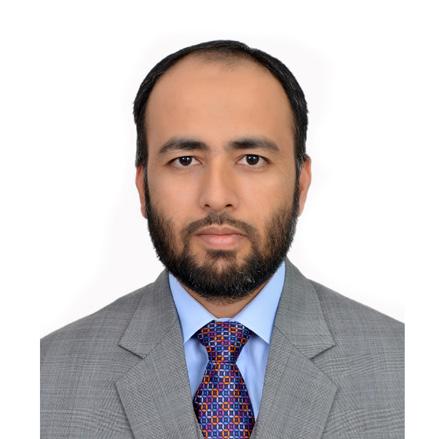



 Teruhisa Oi Policy Advisor
Chen Chen China Advisor
Mikael Jakobsson President
Peter Lundberg Executive Director
Peter Anderberg APUEA Academy Officer
Nathinee Roongsitong Publications Manager
Muhammad Ali APUEAAdvisorAustralasia
Teruhisa Oi Policy Advisor
Chen Chen China Advisor
Mikael Jakobsson President
Peter Lundberg Executive Director
Peter Anderberg APUEA Academy Officer
Nathinee Roongsitong Publications Manager
Muhammad Ali APUEAAdvisorAustralasia
+66
FAX +66
info@apuea.org www.apuea.orgapuea
APUEA Magazine 14 5
ASIA
ASSOCIATIONURBANPACIFICENERGY
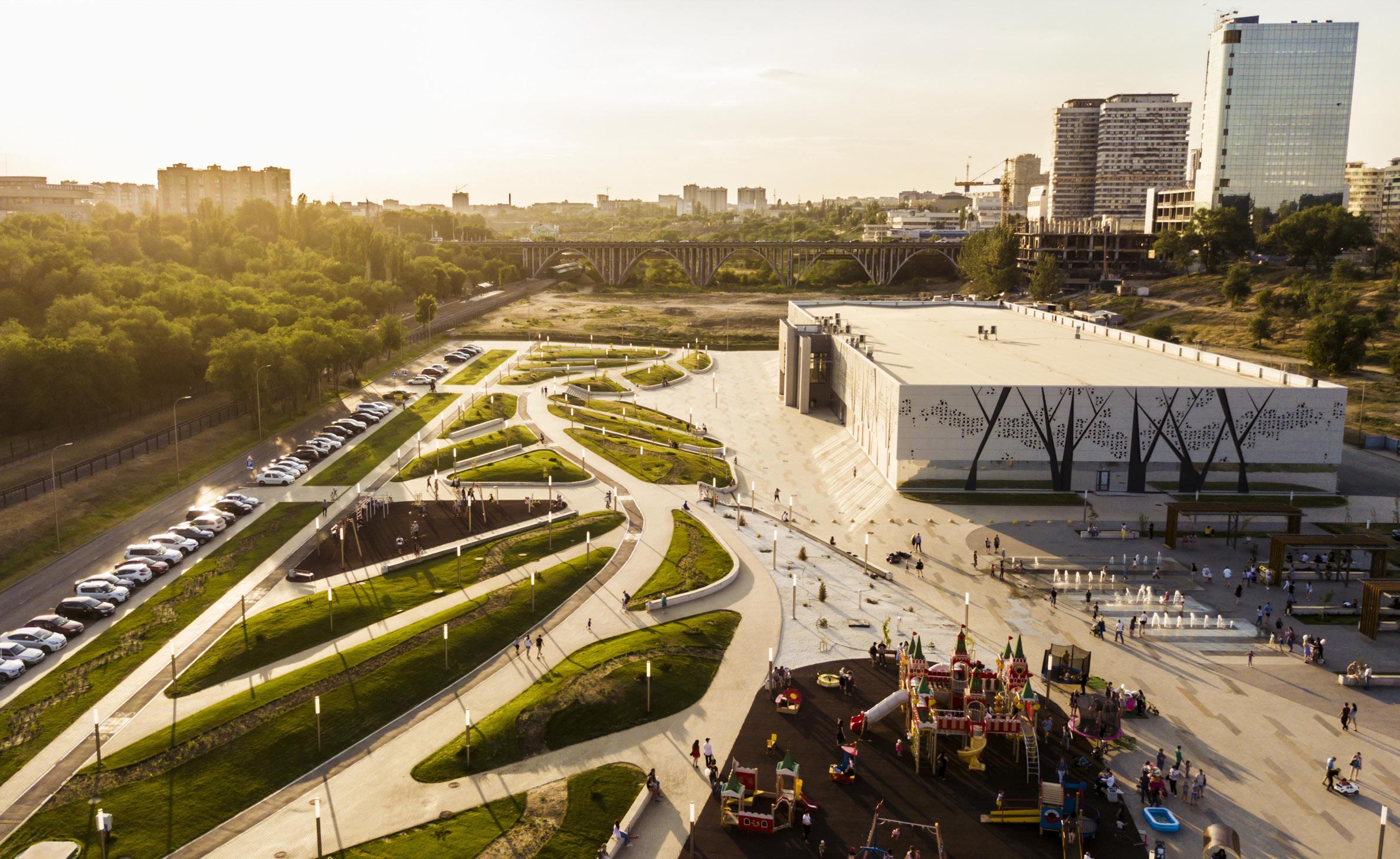
The Asia Pacific Urban Energy Association (APUEA) was launched in 2017 to promote the development of sustainable Urban Energy Systems in the Asia Pacific region. The APUEA platform promotes public and private sector collaboration to develop sustainable urban energy systems that support livable cities across the Asia Pacific region. Our membership and activities serve as an information hub to support city policymakers, program managers, and other stakeholders in the design, development, and implementation of sustainable urban energy systems. Through our activities, including APUEA events, conferences, and continuous outreach to our members, we share international and regional best practices for planning and implementing sustainable urban energy systems—including policies and regulations, business models, and technologies for implementing district heating and cooling, smart grids, energy efficiency improvements, and renewable energy systems.
The APUEA membership provides a unique opportunity to liaise with governmental agencies and important stakeholders and get access to valuable information and intelligence on urban energy developments, business opportunities, trends, and financing in one of the fastest growing energy and infrastructure markets in the world. Membership benefits include a marketing platform, newsletters, APUEA Magazine, Annual Publications, Annual General Meeting including Trade Exhibition and Direct Assistance.
info@apuea.orgmember,APUEAForwww.apuea.orgmoreinformationaboutandhowtobecomeacontact 6
ASIA URBAN ENERGY MEMBERSHIPASSOCIATION

The Asia Pacific Urban Energy Association (APUEA) is a platform to collect and disseminate knowledge, best practices, and tools related to the development of sustainable urban energy systems, and thereby support the development of livable cities in the Asia Pacific APUEAregion.
serves a broad range of members including but not limited to utilities, manufacturers, investors, engineering companies, donor agencies and sector associations that are active in the urban energy sector. Members can choose among several membership categories, depending on their sector and level of engagement in APUEA.

PREMIUM MEMBER
Premium membership includes an active role in the governance of the association through the APUEA Executive Committee and during the APUEA Annual General Meeting.
Premium membership also includes special recognition in APUEA publications and marketing channels, and free participation at APUEA events.
CORPORATE MEMBER
Corporate membership includes influence on the association’s activities during the APUEA Annual General Meeting, recognition in APUEA publications and marketing channels, and discounted participation at APUEA events.
AFFILIATE MEMBER (Invitation only)

Individual or agency invited by the Association to participate as an individual member; and entities such as regional NGOs, development agencies, and utility organisations. An Affiliate Member benefits from the Association but does not take an active role in the Association in terms of its governance and operation.

BENEFITSAdvocacy and Representation Matchmaking and Referrals Direct KnowledgeMarketMarketingIntelligenceandBest Practices Regional and International Events Direct Assistance
PACIFIC
CORPORATE CATEGORY PREMIUM AFFILIATECORPORATEMEMBERMEMBERMEMBER EMPLOYEES USD 10,000 USD 10,000 USD 10,000 < 1,000 1,000 - 10,000 > 10,000 USD 3,500 USD 5,000 USD 6,500 N/A THE ANNUAL MEMBERSHIP FEE DEPENDS ON THE MEMBERSHIP CATEGORY AND ORGANIZATION SIZE: Scan Downloadto RegistrationDownloadFormAPUEAMagazine 14 7
VOCATIONAL TRAINING collaboration


DISTRICT COOLING I DISTRICT HEATING I MULTI ENERGY SYSTEMS (MES) I SMART ENERGY CITY (SEC) www.apuea.orgPROFESSIONALFORMJAKOBSSON@APUEA.ORGMOREINFORMATIONTRAINING Is provided to Government agencies and Public institutions, including the following training module categories:
Is provided in
with educationalAdvancedConceptsIntroductoryinstitutions.trainingandTechnologiestraining Academy APUEA Magazine 14 8
Asia Urban Energy Assembly




LIVE EDITION Supported by APUEA Magazine 14 9
Asia Urban Energy Assembly

7TH GLOBAL DISTRICT ENERGY CLIMATE AWARDS LIVE

QUEEN SIRIKIT NATIONAL CONVENTION 2022 BANGKOKTHAILAND
DAY 1 , 15 SEPTEMBER 2022
REGISTRATION AND NETWORKING
TIME ACTIVITY
08:30-09:00 REGISTRATION AND NETWORKING

SESSION 1: PLENARY SESSION – DISTRICT ENERGY IN THE ENERGY TRANSITION
09:00-12:15
MODERATOR: PETER LUNDBERG, EXECUTIVE DIRECTOR, APUEA, MIKAEL JAKOBSSON, PRESIDENT, APUEA
The session will give the latest update on the state of the Energy Transition to carbon neutrality. The session will include presentations and discussions on how District Energy, including District Heating and District Cooling, will play a vital role in the energy transition, and achieve climate targets. The session will include international speakers from the public and private sector to give a broad insight on the topic.
NETWORKING LUNCH
12:15-13:30 NETWORKING LUNCH
SESSION 2: GLOBAL DISTRICT ENERGY CLIMATE AWARDS CEREMONY (LIVE EDITION)
13:30-14:30
MODERATOR: MIKAEL JAKOBSSON, PRESIDENT, ASIA PACIFIC URBAN ENERGY ASSOCIATION (APUEA)
The live edition of the 7th Global District Energy Climate Awards will celebrate award winning District Energy projects in the categories:
• NEW SCHEME
• EXPANSION
• DISTRICT ENERGY IN DEVELOPING COUNTRIES
SIGNING CEREMONY SESSION
14:30-15:00 CEREMONY AND NETWORKING SESSION
• MODERNISATION
• EMERGING MARKET
• OUT OF THE BOX
SESSION 3: DISTRICT ENERGY BUSINESS MODELS, REGULATORY FRAMEWORKS AND POLICIES
15:00-16:30
MODERATOR: LARS HUMMELMOSE, MANAGING DIRECTOR, DANISH BOARD OF DISTRICT HEATING (DBDH)

This session will include presentations and discussions on District Energy Business Models. Regulatory Frameworks and Polices from an international perspective with insights from Europe, India, Malaysia, and IRENA.
SESSION 4: EVENING ACTIVITY
18:30-22:00 DINNER
EDITION 15-16
SEPTEMBERCENTER
Supported by
AND NETWORKING
SIGNING
EVENT
APUEA Magazine 14 10
Asia Urban Energy Assembly


7TH GLOBAL DISTRICT ENERGY CLIMATE AWARDS LIVE EDITION


QUEEN SIRIKIT NATIONAL CONVENTION
SEPTEMBERCENTER 2022 BANGKOKTHAILAND
DAY 2 , 16 SEPTEMBER 2022

SESSION 1: DISTRICT ENERGY DEVELOPMENTS IN THE ASIA-PACIFIC
TIME ACTIVITY
08:50-12:00
MODERATOR: MOHAMMAD ALI, AUSTRALASIA REPRESENTATIVE, ASIA PACIFIC URBAN ENERGY ASSOCIATION (APUEA)
The session will give share insights on District Energy developments in the Asia-Pacific region including the current status and future potential. The session will include presentations and discussion with speakers from Thailand, Malaysia, India, Qatar, Indonesia, Singapore, and Philippines.
NETWORKING LUNCH
12:00-13:00
NETWORKING LUNCH
SESSION 2: AFTERNOON PARALLEL WORKSHOPS
13:00-15:00
The session is hosted by the Danish Board of District Heating (DBDH) and will focus on sharing experience from international District Heating and District Cooling projects from Denmark, Europe, ASEAN and India.
AFTERNOON ACTIVITY: NETWORKING, INDIVIDUAL MEETINGS OR SITE VISITS
15:00-18:00
NETWORKING, INDIVUDAL MEETINGS OR SITE VISITS
The session is hosted by APUEA, Heat Academy and Heatnet Global, and will discuss the importance of capacity building to increase knowledge on District Heating and District Cooling systems including technology and vocational skills.
15-16
Supported by
APUEA Magazine 14 11
WINNERSAWARDSENERGYDISTRICTGLOBALCLIMATE2021:
By Dr. Robin Wiltshire, Chairman of the Evaluation Panel, Global District Energy Climate Awards

The Ceremony for seventh edition of the Global District Energy Climate Awards took place in November 2021 in Bangkok, hosted by the Asian Pacific Urban Energy Association (APUEA). As well as announcing the following Awards of Excellence, the assessment panel reported that the standard of submission was the highest ever. Full details can be foundorg/winners/winners-2021www.districtenergyaward.at:
More information: www. districtenergyaward. org/2021-bangkokthailand





DHC IN DEVELOPING COUNTRIES AWARD OF EXCELLENCE: THE GOVERNMENT COMPLEX COMMEMORATING HIS MAJESTY THE KING’S 80TH BIRTHDAY ANNIVERSARY, 5TH DECEMBER, B.E. 2550 (2007) | BANGKOK, THAILAND
By 2030, Thailand aims to reduce GHG emissions by 20%. To meet this goal, DAD (Dhanarak Asset Development Co., Ltd.) aims for the development and management of The Government Complex to be green, low-carbon, and sustainable. This 929,900m2 Government complex is designed to minimise energy demand and has a District Cooling System (DCS) with 14,000m2 chilled water storage, charged at night, which reduces electricity demand by around 107,305 MWh and CO2 emissions by nearly 47,000 tons. A special feature of the DCS is a cooling pond one kilometre in circumference which reduces condenser water temperature from about 31˚C to 25˚C by evaporation, increasing the chiller efficiency accordingly.

APUEA Magazine 14 12
More information:




EMERGING DHC MARKETS AWARD OF EXCELLENCE: ALEXANDRA DISTRICT ENERGY UTILITY (ADEU), RICHMOND, CANADA


First established in 2012, the Alexandra District Energy Utility (ADEU) in the city of Richmond is a low carbon district energy system that utilises ground-source technology for heating, cooling and domestic hot water pre-heating. Winning in the category of Emerging District Energy Markets, ADEU comprises an ambient temperature system that draws heat from more than 700 closed-loop boreholes, connects to more than 2,200 dwellings and more than 2.3 million square feet of floor space, using heat pumps in the buildings to elevate the temperature for heating or reject heat for cooling.
NEW SCHEME AWARD: LOW TEMPERATURE DISTRICT HEATING IN BRUNNSHÖG, LUND, SWEDEN





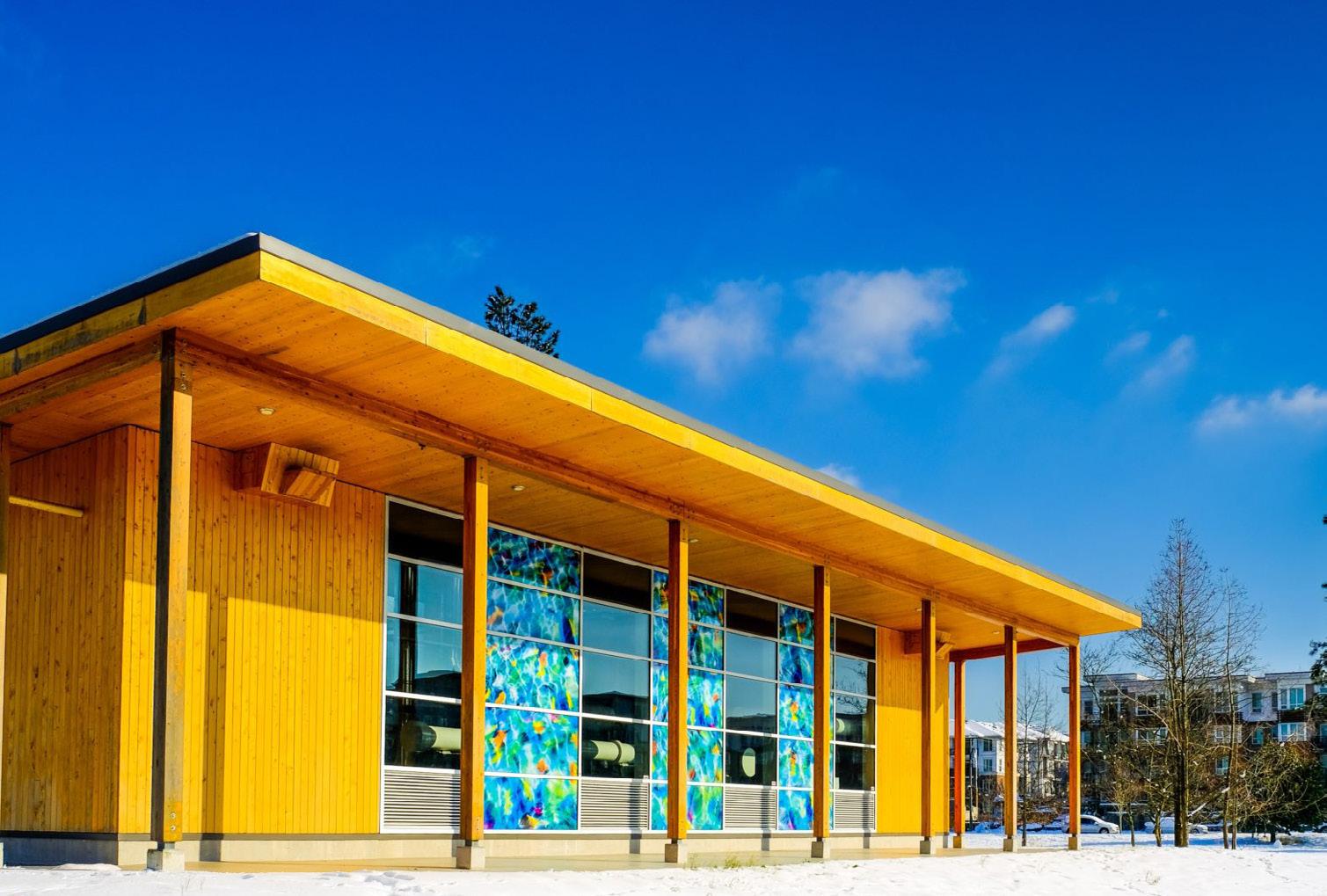
2009 was a very important year for the city of Lund. Two large new research facilities were confirmed and would form the core of a new city district called Brunnshög. Set to be a leading example of sustainable city development with very high standards of insulation, heating is nevertheless still required during the cold months, and there is a year-round need for hot tap water. Consequently, a next-generation low temperature district heating, the world’s largest, was inaugurated in autumn 2019, using residual heat from the research facilities. Innovative technical solutions also include special new pipes requiring far fewer joints, leading to a significant reduction in cost.

www.districtenergyaward. org/alexandra-districtenergy-utility-richmondcanada More information: www. districtenergyaward. org/low-temperaturedistrict-heating-inbrunnshog-lund-sweden
APUEA Magazine 14 13
More information: www. districtenergyaward.org/ district-heating-systemof-bolzano-bozensouth-tyrol-italy



MODERNISATION AWARD: DISTRICT HEATING SYSTEM OF BOLZANO-BOZEN, SOUTH TYROL, ITALY



Alperia Ecoplus, owner of the district heating system in Bolzano, began a modernisation programme from 2013. Now with heat sources that include biomass (60% of which is local), residual heat from industrial processes and Bolzano’s waste-to-energy plant, this resulted in the expanded heating plant having 5.600m3 buffer storage and a new, high efficiency pump system supplying the existing city, hospital and industrial zone. The network continues to expand; currently, 262 apartment blocks are connected in the city, and another 250 will be connected by 2025. When the investment plan for Bolzano is completed, the annual reduction of CO2 emissions will be approximately 15,000 tonnes.

More information: www. districtenergyaward. org/district-coolingcentral-plants-qatarfoundation-doha-qatar

EXPANSION AWARD: DISTRICT COOLING CENTRAL PLANTS, QATAR FOUNDATION, DOHA, QATAR

Established in 1995 as a non-profit organisation, The Qatar Foundation began with primary education, and has since expanded so that Qatar’s Education City now comprises a 12km2 complex with universities and research facilities, as well as both primary and secondary schools. The first district cooling plant was commissioned in 2003 and was followed over the next ten years with 5 more district cooling plants growing from an initial capacity of just under 40MW to more than 500MW. Along with the expansion of the system, the performance of the internals of older buildings have been improved. The latest expansion at the complex is the Education City World Cup Stadium, served by state-of-the-art equipment and completed in September 2020.



APUEA Magazine 14 14
OUT-OF-THE-BOX








The Out-of-the-Box category caters for submissions which do not readily fit with any of the above categories. While not making an outright Award of Excellence in this category, the assessment panel decided to award Certificates of Merit for two particularly enterprising systems. These were the Floating Office in Rotterdam, the Netherlands, and the Zakito District Cooling system in Curacao, in the Dutch Caribbean.







More information: www. districtenergyaward. org/zakito-districtcooling-curacao-dutchcaribbean More information: www. districtenergyaward. org/floating-officerotterdam-netherlands G L OBA L D I S T R I C T EN E R G Y C L I M AT E A W A R D S APUEA Magazine 14 15
INTERVIEW WITH
Peter Lundberg
Executive Director, Asia Pacific Urban Energy Association (APUEA) BY APUEA SECRETARIAT
WE FOCUS ON CITIES AS THEY ACCOUNT FOR MORE THAN SEVENTY PERCENT OF BOTH THE ENERGY CONSUMPTION AND EMISSIONS AND IT’S WHERE WE CAN MAKE THE GREATEST IMPACT. WITH THAT SAID, WE ARE ALSO INCLUDING INDUSTRIAL CLUSTERS AND DEVELOPMENT PARKS.
The APUEA secretariat is headed by the Executive Director, Peter Lundberg since 2018. Over the years he has worked tirelessly to support members and expand and position APUEA as the natural platform for actors in the District Energy industry across the Asia Pacific. We sat down with Peter to hear what he is busy with at the moment, get insights into the APUEA operation, what he has experienced in the first years of APUEA operation, and what he expects during the first Asia Urban Energy Assembly held in Bangkok in September.
CAN YOU GIVE AN INTRODUCTION TO YOURSELF?
I am originally from Sweden and have an energy engineering background, with a focus on urban energy, especially District Cooling and District Heating. I’ve been working both as an engineer and project manager, designing and implementing district energy schemes. I started my career almost 20 years ago, initially gaining experience from Sweden and the European

Inmarket.2015,I
moved to Asia to work on district cooling and district heating projects in China. I joined APUEA (Asia Pacific Urban Energy Association) in 2018 as the Head of Operations, and since last year I’m acting as the Executive Director of the Association.
CAN YOU INTRODUCE APUEA AND IT’S HISTORY?
APUEA is a member-based regional sector association with a mission to promote the development of sustainable urban energy in the Asia-Pacific region. APUEA was established in 2017 as a response to requests from various stakeholders in the region. Initially, APUEA was incubated by the International Institute for Energy Conservation (IIEC), but since 2021 APUEA has been incorporated as an individual entity.
We focus on cities as they account for more than seventy percent of both the energy consumption and emissions and it’s where we can make the greatest impact. With that said, we are also including industrial clusters and development parks. We are a neutral platform bridging our members and partners with cities to support the energy transition.
“
“
APUEA Magazine 14 16
WHAT ARE YOU BUSY WITH AT THE MOMENT?
On one hand, with APUEA’s daily operations, to ensure that we are supporting our members in the best possible way. With our activities, we are also creating meeting platforms to support cities in the APAC region to develop sustainable energy infrastructure.
At the moment, we are preparing for our largest and newly established flagship event Asia Urban Energy Assembly, which we are hosting here in Bangkok during 15-16 September co-located with the ASEAN Sustainable Energy Week – the region’s largest energy event with some twenty thousand visitors expected.
Asia Urban Energy Assembly has a District Energy theme and will also accommodate the live edition of the 7th Global District Energy Climate Awards, which is an international award for the best District Energy projects in different categories.
HOW DO THE MEMBERS BENEFIT FROM APUEA?
The APUEA secretariat has vast experience in the regional and international urban energy sector, so we have a good understanding of the complex business environment and what it takes to engage important
Westakeholders.supportour
members in many different ways with marketing, sales support, matchmaking, partnerships, intelligence, and other ad-hoc support through our different support vehicles.
The APUEA Magazine, which is published three to four times a year, serves as a publication where our members can advertise, write articles, and share case studies. We produce the APUEA Magazine in-house, and the members are free to use the final product for their own marketing activities.
Besides our website and e-newsletters, we are also quite active in social media, where we besides providing an arena for our members, also share news related to sustainable urban energy, both from the region but also internationally.
When it comes to sales support and partnerships, we introduce our members
to potential customers, business opportunities, and partners relevant to their respective needs. We are not limited to our immediate extensive network, but also help our members approach other actors utilizing our status as a neutral and not-for-profit organization.
Our events such as conferences, seminars, and workshops, serve as arenas for knowledge-sharing, marketing, sales, matchmaking, and partnerships. We typically host about twelve events every year, and now switching from a period of online events to physical events.
IT SEEMS THERE ARE BENEFITS FOR CITIES AND LOCAL GOVERNMENTS AS WELL?
Yes, from a city perspective we are definitely a source of experiences and know-how related to policies, energy planning, and technological best practices. Through APUEA, cities and developers can learn from both domestic and international experiences. Our activities are often eye-openers, and a source of inspiration for city representatives on how things have been done in other places. These experiences can inspire to help them achieve their Ingoals.2021,
we established the APUEA Academy which is providing professional and vocational capacity building for cities, government agencies, and students. APUEA Academy was launched to help
cities address capacity gaps in developing and managing sustainable urban energy schemes across Asia Pacific.

APUEA COVERS A LARGE GEOGRAPHICAL AREA – HOW DO YOU ADAPT TO THE LOCAL MARKETS?
Our geographical focus is on China, India, and Southeast Asia, even if we occasionally have activities in other economies in the APAC region as well. Our geographical focus is decided by the members and may change over time.
In order to act in the local markets, there is a great need for localization. Both for us and our members. We work a lot with local partners, both event organizers, and national associations. Within our geographical focus areas, we have also built-up relationships directly with government agencies, NGOs, IGOs, and IFIs.
WE SUPPORT OUR MEMBERS IN MANY DIFFERENT WAYS WITH MARKETING, SALES SUPPORT, SUPPORTTHROUGHANDPARTNERSHIPS,MATCHMAKING,INTELLIGENCE,OTHERAD-HOCSUPPORTOURDIFFERENTVEHICLESAPUEAMagazine
14 17
ARE THERE ASSOCIATIONSSIMILARASAPUEA IN
OTHER REGIONS?
Yes, there are. In North America, International District Energy Association (IDEA) has been around for a century, working similar to us with events and trade exhibitions. In Europe, Euroheat & Power has been around for more than half a century, working more with regional policies than we do.
We have been working with both IDEA and Euroheat & Power in the past, benefitting from their vast experience. Euroheat & Power is co-hosting Asia Urban Energy Assembly with us now in September, and we have a quite well-established collaboration sharing insights from the markets in our respective regions, co-creating workshops, and supporting each other in different ways. We share a common goal to support cities and regions in the energy transition by providing a neutral platform where public and private stakeholders can meet, network and engage in activities to speed up the development of sustainable energy infrastructure.
WHAT DIFFERENTIATES THE APAC REGION FROM EUROPE AND NORTH AMERICA?
We work in an extremely diverse region, both in terms of climate, politics, and economic development. APAC is increasing its share of the global economy each year, and here is where the energy demand is increasing dramatically as a result of climate
change, urbanization, and economic development – not least the cooling
Asdemand.Imentioned
before, we have to focus and adapt to the local markets. Even the terminology differs across the region, which is one of the reasons we are using the term “Urban Energy” instead of “District Energy”.
WHAT TRENDS DO YOU SEE IN APAC AT THE MOMENT?
The increasing energy costs in the past year are accelerating energy efficiency activities across the region. We are also glad to see that almost all economies across the region have made climate pledges during COP26, with updated policies and action plans as a result. The awareness of sustainable development has increased significantly in recent years.
HOW DO YOU SEE THE ROLE OF DISTRICT ENERGY IN APAC AND BEYOND?

District Heating and District Cooling are the backbone of integrated urban energy systems today, enabling sector coupling. In the past, District Energy was mainly a reliable thermal energy supply system with scale advantages, removing emissions from the city center. Nowadays District Energy has become crucial to increase the integration of renewable energies, provide flexibility to the electricity grid, enable energy recovery, and increase energy security. District Energy systems are multi-energy systems, where different heat sources or
heat sinks can be applied.
Within our geographical focus area, District Cooling is most relevant, except for China – the world’s second-largest District Heating market. It is important to highlight District Cooling as a not-in-kind solution for HFC phase-out. By phasing out HFCs 0.5 degrees of global warming can be avoided. There are more than a hundred District Cooling systems in China alone, and the development of District Cooling systems is booming in South and Southeast Asia, where about 50 systems are already in operation.
HOW ARE YOU LOOKING BACK ON APUEA’S FIRST YEARS OF OPERATION?
It has been an interesting journey indeed. Referring to IDEA and Euroheat & Power, we are still a quite young association and have a long journey ahead of us. Besides IIEC, we were lucky to get supported by our founding members ABB, Engie, and Johnson Controls since the very beginning and have had a great collaboration since.
We have also had a pandemic throughout half of our existence, which wasn’t optimal and required that we switched to a new approach with more online activities. Despite this, we have kept growing and increased our activities year by year. Now, we can see things are becoming more normal, and again we are quite glad to see that governments across the region take climate change and energy security seriously which makes it easier for us to support the development of sustainable urban energy systems.
Peter Lundberg, as a moderator in Changsha, China in 2019.
APUEA Magazine 14 18
FINALLY, WHAT CAN WE EXPECT WHEN ATTENDING THE ASIA URBAN ENERGY ASSEMBLY, IN BANGKOK IN SEPTEMBER?


During the course of the event, we will offer a unique opportunity to meet, and network, learn, and be inspired, by regional and international energy experts. We also expect an international audience of 200+ energy experts from the public and private sectors, from Europe, the Middle East, ASEAN, and India to meet and discuss how to accelerate the development of District Energy in the Asia-Pacific region, and other related topics and activities. The event is, as far as I know, the only one of its kind with a focus on District Energy in the AsiaPacific region. The event is also a stepping stone to creating more similar future events in the Asia-Pacific region.
The increasing energy costs in the past year are accelerating energy efficiency activities across the region. We are also glad to see that almost all economies across the region have made climate pledges during COP26, with updated policies and action plans as a result. The awareness of sustainable development has increased significantly in recent years.
The Asia Pacific Urban Energy Association (APUEA) is a Bangkok based industry association launched in 2017 to promote the development of sustainable Urban Energy Systems in the Asia Pacific region. The APUEA platform promotes public and private sector collaboration to develop sustainable urban energy systems that support livable cities across the Asia Pacific region. Our membership and activities serve as an information hub to support city policymakers, program managers, and other stakeholders in the design, development, and implementation of sustainable urban energy systems. Through our activities, including APUEA events, conferences, and continuous outreach to our members, we share international and regional best practices for planning and implementing sustainable urban energy systems—including policies and regulations, business models, and technologies for implementing district heating and cooling, smart grids, energy efficiency improvements, and renewable energy
This article was published in the APUEA Magazine issue 14 September 2022. www.apuea.org
Peter Lundberg with Varnnapran Patanotai, Event Manager, ASEAN Sustainable Energy Week
https://apuea.orgsystems.
APUEA Magazine 14 19
One of the APUEA members who have been with us since the start of the association in 2017 is Qatar Cool. With their unique experience of developing and operating District Cooling projects in Qatar, Qatar Cool is now ready to expand in the International Market with their new international branch, United District Energy International (UDEI), which will be responsible for their international growth. One part of this expansion is to participate as a Gold Sponsor at the Asia Urban Energy Assembly in Bangkok in September. To hear more about Qatar Cools vast experience in District Cooling and their international expansion, we had a conversation with Mohannad Khader, who is the Commercial and Development Director at Qatar Cool.
Mohannad Khader
Commercial & Development Director Qatar Cool BY APUEA SECRETARIAT INTERVIEW WITH


“
WE PROVIDE END-TO-END SERVICE TO CUSTOMERS, STARTING FROM THE FEASIBILITY STUDY TO THE CONCEPTUAL DESIGN, THE SUPERVISION, AND EXECUTION OF THE PROJECT. WE ALSO HAVE OUR O&M TEAM THAT OPERATES AND MAINTAIN THE SYSTEM WHEN PROJECTS ARE COMPLETED. ON THE COMMERCIAL SIDE, WE HAVE EXPERIENCE IN ALL THE TYPES OF COMMERCIAL AND SERVICE AGREEMENTS NEEDED FOR A DISTRICT COOLING SYSTEM.
“
CAN YOU MAKE AN INTRODUCTION TO YOURSELF AND QATAR COOL?
I work as the director of commercial and development at Qatar Cool, and I have been at the company since 2005. We are a District Cooling provider, and we supply District Cooling in two districts currently in Qatar, the West Bay District which is the main commercial business area of Qatar, and the Pearl Qatar, which mainly consists of residential and commercial spaces, and where our newest cooling plant will become operational this year.
CAN YOU DESCRIBE QATAR COOL’S MAIN ACTIVITIES AND GOALS?
Since we started in 2006, we have gained extensive experience as a District Cooling provider, and I can confidently say that we provide end-to-end service to customers, starting from the feasibility study to the conceptual design, the supervision, and execution of the project. We also have our O&S team that operates and maintain the system when projects are completed. On the commercial side, we have experience in all types of commercial and service agreements needed for a District Cooling System. We also have experience in dealing with and taking care of customers and end users, including billing, metering, and customer service. We work with the BOT model (Build Operate Transfer) when engaging with the master developers. Our main goal is to be recognized as the best-in-class District Cooling provider and to expand in the international market. This is one of the main reasons for attending and being a Gold Sponsor at the Asia Urban Energy Assembly in Bangkok in September, and by introducing our international branch UDEI.
20
WHAT ARE THE GEOGRAPHIC FOCUS AREAS OF QATAR COOL?

Our current operation is in Qatar, but a year ago, we started implementing our international expansion. We have created an international arm of Qatar Cool, called United District Energy International (UDEI), which will be the vehicle for Qatar Cool at international venues. We are now studying the Saudi Market, which has the potential for huge District Cooling projects. We have also engaged in a number of feasibility studies in Egypt. In the Asia-Pacific countries, we are keeping our eyes and ears open to any potential projects that we can be a part of. A few years back, we studied the potential of District Cooling systems globally, and we see the most potential for developing District Cooling projects in the Middle East and Asia-Pacific areas.
CAN YOU DESCRIBE THE BENEFITS OF DISTRICT COOLING, AND HOW IT PLAYS
AN IMPORTANT ROLE TO DECARBONIZE CITIES?
District Cooling systems provide benefits not only to buildings but also to governments, society, the master developer, and the end users. District Cooling systems can reduce electricity consumption by up to 50% compared with a conventional cooling system. Reduced electricity consumption leads to a reduction of CO2 emissions and other emissions and also provides financial gains for the government. For example, here in Qatar, where we use natural gas to produce electricity, reducing electricity consumption means that the natural gas export can increase, bringing more revenue to the country. With District Cooling systems, chillers are removed from buildings, adding more value and creating more flexibility for architects. The areas used by chillers can instead be used for other purposes, like car parks and helipads. Another benefit is the operation and service of the buildings. As District Cooling systems are more reliable, there is no need to have an experienced team to take care of the building’s chillers or cooling towers. The reliability of the
service is significantly better with experts running the cooling plant with multiple redundancies, including thermal energy storage tanks, and using multiple cooling plants in the network. These are the reasons why the availability of District Cooling systems is much higher than for individual cooling systems. Talking about District Cooling benefits in numbers, I will give a few examples. In the last 12 years, our District Cooling systems have saved 3 billion kWh in electricity consumption compared with if the projects had been using conventional cooling systems. This is enough energy to power 12,500 homes and is equivalent to the reduction of 1,65 million tons of CO2, equal to the emissions of 360,000 cars during a year. And to absorb this amount of CO2, you must plant 21 million trees. The government’s increased natural gas export revenue when reducing electricity production is about 94 million USD. We also say that every square meter connected to District Cooling could contribute to about 36 Kg of CO2 savings.
APUEA Magazine 14 21
DO YOU HAVE RECOMMENDATIONSANY ON ACTIVITIES THAT CAN HELP TO SPEED UP THE DEVELOPMENT OF DISTRICT COOLING?
District Cooling fits any country and city with a suitable climate and where the cooling demand and cooling density is high. From our experience, the major obstacle when developing District Cooling projects is more from a technical, commercial, and planning point of view than regulations. We have seen that District Cooling sometimes is perceived as expensive and difficult because of the lack of planning from the master developer, the district Cooling provider, and the project’s marketing side. So, the most important thing needed to create successful District Cooling projects is a good plan. This is vital, not at least at the beginning of the project, in the design stage, where many benefits for the end users can be secured and prepared so that they are fully visible when the areas become for sale.
IN YOUR EXPERIENCE FROM QATAR, ARE THERE ANY RESTRICTIONS ON LAND USE FOR THE DISTRIBUTION NETWORK?
From our experience in West Bay, where buildings can either connect to the District Cooling network or install their own cooling system, the key is to have a good dialogue with the local government and explain the benefits that the District

Cooling system brings to the area. In our case, the government understood this and allowed us to install a distribution network in an area where we do not have exclusivity. For brownfield projects, the pipe networks and distribution systems are definitely a big challenge and are the key when deciding to do the project or not. However, in Qatar, a large majority of District Cooling projects are developed with master developers that have exclusivity of the project. Therefore there are few restrictions on the distribution networks.
HOW DO YOU SEE THE POTENTIAL FOR DISTRICT COOLING DEVELOPMENTS IN THE ASIA PACIFIC REGION?
We see more and more projects developed, and the two major factors needed to develop District Cooling projects, hot climate and rising population in cities, are present in the region. District Cooling is absolutely part of the solution for cities in the Asia Pacific to help meet the growing cooling demand, reduce CO2 emissions, and reduce stress on the power grids.
AS A GOLD SPONSOR OF THE ASIA URBAN ENERGY ASSEMBLY IN BANGKOK IN SEPTEMBER, WHAT ARE YOUR GOALS, AND EXPECTATIONS DURING THE EVENT?
We are very excited to participate in a conference after three years of
restrictions and to meet the people face to face that we have previously met virtually. It is an excellent opportunity for us to learn from the people from the region about what they know about District Cooling and the key factors of developing projects in countries like Thailand, Malaysia, and Singapore. We also want to spread the word that a new player is coming to the region and would like to explore the opportunities for the expansion of District Cooling. We have good experience dealing with the complete value change of District Cooling Weprojects.lookforward to meeting potential developers, seeing the competitors and learning what they do, and sharing with them what we are doing with our new international branch UDEI.
Qatar Cool is the leading district cooling company in Qatar.
Since its inception, Qatar Cool has aimed for excellenceoperationalinevery aspect of its business.
Over the past 19 years, the company has developed solid technical and operational experience and has refined its approach on both business-to-business (B2B) and business-to-consumer (B2C)
Currently,fronts.
Qatar Cool is the leading commercial provider of district cooling services in Qatar.
Qatar Cool currently owns and operates five cooling plants covering the West Bay and The Pearl-Qatar districts with the combined capacity of 237,000 tons of refrigeration.
22
Qatar

In the last 12 years, our District Cooling systems have saved 3 billion kWh in electricity consumption compared with if the projects would have been using conventional cooling systems. This is enough energy to power 12.500 homes and is also equivalent to the reduction of 1.65 million tons of CO2, which you would need 21 million trees to absorb. This number is also equivalent to the emissions of 360.000 cars during a year.

Qatar Cool is the leading district cooling company’s in Qatar. Since its inception, Qatar Cool has aimed for operational excellence in every aspect of its business. Over the past 18 years, the company has developed solid technical and operational experience and has refined its approach on both business-tobusiness (B2B) and business-toconsumer (B2C) fronts.
Currently, Qatar Cool is the leading commercial provider of district cooling services in Qatar. Qatar Cool currently owns and operates four cooling plants covering the West Bay and The Pearl-Qatar districts with the combined capacity of 237,000 tons of refrigeration.
This article was published in the APUEA Magazine issue 14 September 2022. www.apuea.org

APUEA Magazine 14 23
Since APUEA was launched in 2017, we have had several members, and partners working with us to develop, and execute activities by providing advising support as well as cohosting events with the APUEA secretariat. One of the partners that have been with us since the start is the Danish Board of District Heating (DBDH), through their Managing Director, Lars Hummelmose. As a continuation of the collaboration with APUEA, DBDH is joining the Asia Urban Energy Assembly here in Bangkok in September as a Gold Sponsor.
We sat down with Lars to talk about DBDH, their goals and activities, their view on District Energy developments, and why they are coming to Bangkok in September to take part in the Asia Urban Energy Assembly.

Lars also shared some important District Energy experiences from Denmark, that could help when developing more District Heating and District Cooling systems in the Asia-Pacific region.
Lars Hummelmose Managing Director at the Danish Board of District Heating (DBDH) BY APUEA SECRETARIAT INTERVIEW WITH

NATIONS, CITIES, AND MUNICIPALITIES CAN PLAY AN IMPORTANT ROLE IN DEVELOPING DISTRICT ENERGY SYSTEMS BY TAKING AWAY SOME OF THE FINANCIAL RISKS. THE MORE RISK THAT CAN BE TAKEN AWAY, THE LOWER THE IRR NEEDED FOR THE PROJECT, WHICH MEANS THAT THE PROJECT ITSELF CAN BE LARGER.
CAN YOU MAKE AN INTRODUCTION TO YOURSELF AND DBDH?

I have a background in business and economics, and I have been the managing director at the Danish Board of District Heating for ten years. Before that, I was in the private sector working with international sales and business development. I was also working for five years in the Ministry of Foreign Affairs. DBDH has been around for more than forty years, so we have a long DBDHhistory.is
a member-based NGO, and we focus on District Heating and District Cooling. We have today seventy members including utilities, consultant engineers, and technology providers. It is a good mix of companies with an interest in developing District Energy.

We are a Danish-based organization, and our mission is to promote District Energy for sustainable cities transformation and to create a “go-to platform” where, for instance, you as a developer, a city, or a District Heating company get the answer to questions either directly by us or we can help you to find the right answer. By District Energy, we mean District Heating and District Cooling.












With energy savings, of up to forty percent, more and more developers choose District Cooling as they become more and more focused on sustainability and environmental aspects of their projects. The installed cooling capacity can also be reduced by about thirty percent. The energy loss in the distribution system is also very low.

“
“
APUEA Magazine 14 24
CAN YOU DESCRIBE HOW











We have four pillars, and pillar one is that we create, develop, and communicate on District Energy topics by organizing seminars and conferences in Europe, Asia, the Middle East, and North America. We often co-create seminars with local stakeholders, often together with national District Energy Associations or other stakeholders, for example, with the Asia Pacific Urban Energy Association (APUEA) in the Asia-Pacific region. In this partnership, we bring in knowledge from a Danish perspective by sharing our experiences, but also, we are interested to learn from local experiences.
The goal of our activities is to help cities to develop more District Energy and also to be inspired by developments in Denmark and other countries. An example of an activity that we arrange, could be an event targeting regulators and sharing experiences from other cities and countries on how to increase energy efficiency by applying District Energy systems. Our events often include direct dialogue with stakeholders, including developers but also utilities, and District Energy operators.
Many of our members have the technical knowledge and know-how to optimize District Energy Systems. It could be IT technology, the newest piping technology, and the newest technical developments. Technical discussions are a vital part of our event and activities.
The second pillar is to strengthen the market opportunities for District Energy. If we can help to develop District Heating in the Netherlands or District Cooling in Malaysia, then our members have opportunities to grow their businesses. So, our members are using our membership to promote District Energy, and the more District Energy projects that are developed, the more potential sales they will have.
The third pillar is a communication platform, including our Hot and Cool Magazine. We say that it is the world’s best District Energy Magazine, and it is certainly the most distributed District Energy magazine. It has been around for more than thirty-five years, so it is quite known in the industry. It is also a









way for companies to communicate new cases on how to develop District Energy. Again, this is a go-to platform to learn how to develop more and better District Energy Systems. The fourth pillar is market development, and we participate in several international development projects funded by, for example, the International Energy Agency (IEA), the European Union, or the Danish Energy MainlyAgency.we
are involved in projects in Europe, but we are also starting projects in China, where we are working on how to implement a holistic view of energy planning in a city. We do this project together with APUEA, China District Energy Association, and the local city.
WHAT ARE THE GEOGRAPHIC FOCUS AREAS OF DBDH’S ACTIVITIES?
We are a Danish-based organization, and our members are Danish companies. However, our focus is to export District Energy as a concept and create a dialogue with partners, and we create the platform for these discussions. Our focus markets are where District Energy Systems already exists. In Europe, we often have activities in Poland, Germany, the United Kingdom, the Netherlands, and France. We have had activities in Ukraine where the focus is on renovating old District Heating Systems.
We also used to have activities in Russia, and we have had a lot of seminars and conferences in China over the years. We also organize a lot of visits to Denmark, and as one of the leading District Energy countries in the world, there is a big interest in learning about our District Energy Systems, how we have done it, and what technology we use.
We put together tailor-made programs for the international visitors based on what they want to see, it could be how to implement heat pumps or co-produce electricity in a District Energy system. We make sure to show that these delegations get to meet utilities and see District Energy Systems that they are looking for. We have the twenty largest District Energy companies in Denmark as members and they will open their doors to showcase what they have done as well as have a dialogue with the international guests.
We also have a role in going into newer markets that are relatively close to investing in District Energy systems. Like in Southeast Asia there are interesting markets in Thailand and Malaysia that are new areas for our members where we have not had activities before and that we are starting to look into.
Another region where we have annual activities is the Middle East. There are a lot of District Energy investments in UAE, Saudi Arabia, and Qatar.
We mainly choose where to have activities, based on what our members want to go, but basically where there is a District Energy market, is where they want to be. Therefore, we are present in markets where the market already exists or where there will be investments in a year or two.
But recently we do more activities also in markets that have the interest in investing in DE projects in the future.
HOW DO YOUR MEMBERS USE DBDH ACTIVITIES IN THEIR BUSINESS?


Out of our seventy members, twenty companies are utilities, ten are engineering consultancies, and forty are technology producers, for example, providers of pumps, IT technology, valves, pipes, and whatever you need in a District Energy System.
Our members are using us as a platform to promote District Energy and also potentially grow their business.
Our platform provides wider access to markets than if they would approach it individually. They are also specialists in their field and our using our platform to promote more broadly.
Our members also co-operate with each other as their offerings complement each other. There is a very open approach in Denmark to develop District Energy projects which results in strong collaboration which companies also want to bring to the international markets.
DBDH WORK, AND WHAT ARE THE MAIN ACTIVITIES AND GOALS?
APUEA Magazine 14 25
Denmark might be a world champion in District Energy, but it is difficult to copy what we have done here because there is a long history of how we have developed the sector. But everyone can be inspired and learn something here and there that can be useful when developing projects in other places. In Denmark, sixty-seven percent of all houses are connected to District Heating. This development has taken one hundred years, and cannot be adopted in other places overnight.
Denmark is also one of the countries in the EU with the lowest CO2 emissions in the heating sector due to the high utilization of District Heating. The main benefit of District Energy is energy efficiency which makes it possible to use
energy that otherwise would be lost. In the 1980s, it was determined by law, that waste heat from electricity production has to be used and not wasted. Surplus heat is also available from industrial processes and Data Centers. This surplus heat can be injected into District Heating networks and therefore be utilized and help reduce emissions by maximizing energy efficiency. Industries also save money and sometimes earn money, when cooling towers are not needed and when they can sell their waste heat. Both District Heating and Cooling go hand in hand with energy efficiency. In the context of cooling, District Cooling can reduce energy consumption by 20-40 percent compared to individual cooling
Wesystems.alsotalk




about system integration, for instance, seventy percent of the power in Denmark comes from renewable energy sources, mostly from the wind but also from solar PV systems and CHP based on renewable energy sources. And the challenge with this is that you do not know when the wind is blowing

and the sun is shining, and sometimes the power production is higher than the consumption. We have now invested in a large number of electric boilers and heat pumps that produce heat for District Heating networks when the power production from our renewable energy sources is higher than the consumption and the electricity price are low. On the other hand, when the electricity price is high, we use more co-generation plants with bioenergy, that is producing both electricity and heat. So, District Heating plays a balancing role in the power sector. It has been decided that, in 2035, there will not be any emissions from the heating and cooling sectors. So, system integration plays an important role in the decarbonization of the energy sector in Denmark.
CAN YOU SHARE YOUR EXPERIENCE WITH THE DEVELOPMENT OF DISTRICT COOLING IN DENMARK?


District Cooling is growing rapidly in Denmark but from very low levels.

CAN YOU DESCRIBE THE BENEFITS OF DISTRICT ENERGY, AND HOW IT PLAYS AN IMPORTANT ROLE TO DECARBONIZE HEATING AND COOLING IN DENMARK, AND ELSEWHERE?
APUEA Magazine 14 26
The difference, compared with the heating sector which is non-profit driven, meaning that District Heating companies cannot accumulate profit. On the other hand, District Heating companies have access to state-guaranteed loans, ensuring that they have access to capital for investments with the lowest interest in the market. And whereas the District Heating market is non-for-profit and heavily regulated, the District Cooling sector is on the other hand marketdriven and for-profit. This difference in regulation makes it a bit complicated for District Heating companies to get involved in the District Cooling business. This is slowly changing and District Heating utilities are finding ways how to operate District Cooling networks by separating them from the heating business. There are about ten District Cooling projects now under development in Denmark, and the good thing about being located in northern Europe is that due to the cold climate, it is possible to use free cooling, from the ocean or lakes, during parts of the year. District Cooling customers are commercial buildings, like offices, hospitals, and industries.
DO YOU HAVE RECOMMENDATIONSANY ON ACTIVITIES THAT CAN HELP TO SPEED UP THE DEVELOPMENT OF DISTRICT ENERGY?

The main reason that we have so many District Heating Systems in Denmark, is because it has been developed in a nonfor-profit regime. That means that District Heating utilities, when applying for loans have to prove the benefits for society that the investment will bring. Being a not-for-profit company, also means that existing customers will not pay for the expansion of the system. This cost will only be covered by the new customers. The last thing is that the consumer price has to be lower than the alternative cost. All these conditions require a lot of preparation and planning before the loans can be approved and the systems to be built. The benefit of the “Danish System” is that projects with an IRR of 4 percent can be Webuilt.seein
other countries that mainly have private operators will need an IRR of much more than 10 percent. With the need of high IRR the district heating system becomes much smaller and fewer customers will be connected to the District Energy System. My point is that nations, cities, and municipalities can play an important role in developing District Energy systems by taking away some of the financial risks. The more risk that can be taken away, the lower the IRR needed for the project, which means that the project itself can be larger. District Energy Systems are infrastructure projects, and cities also want to make “green” heating and cooling projects, and in Denmark it is normal for cities to own the District Heating system itself, meaning the pipes, and production
Butfacilities.theoperation, production of heat, maintenance, expansion design, etc. can be done by private companies. I think this model is a good example of a publicprivate partnership with many benefits to society as a whole.
IN ASIA, IT IS COMMON TO HAVE LIMITATIONS ON LAND USE, WHICH MAKE IT DIFFICULT TO CONNECT TWO DISTRICT ENERGY PROJECTS
All the roads and sidewalks our cityowned and pipes used for District Heating and District Cooling Systems can be buried under the road together with other utilities, like water, and sewage pipes, power cables, and internet fiber systems. So, the city decides what kind of infrastructure that can be installed under the roads and sidewalks.
There are, of course, certain rules to follow, for instance, if it is a new road, you cannot dig it up during the first three years. It is the same rules whether it is a public or private company.

District Cooling systems are normally somewhat smaller than District Heating systems, one reason for this is that larger pipes are needed to distribute the water but also customers are limited to commercial buildings, hospitals, and certain industries.

HOW DO YOU SEE THE POTENTIAL FOR DISTRICT ENERGY DEVELOPMENTS IN THE ASIA PACIFIC REGION?




The potential is enormous. Especially for District Cooling, we see more and more projects being developed, in Malaysia, Indonesia, and India, and also a very strong development in the southern part of China.
These projects are mostly developed where land price is high and developments are somewhat exclusive.
With energy savings, of up to forty percent, more and more developers choose District Cooling as they become more and more focused on sustainability and environmental aspects of their projects. The installed cooling capacity can also be reduced by about thirty percent. The energy loss in the distribution system is also very low.


With District Cooling Systems, there is no need for cooling towers and chillers which means that buildings use these spaces for other purposes. There are also economic factors, as the economy grows,



IF THEY ARE NOT NEXT TO EACH OTHER. CAN YOU SHARE SOME EXPERIENCE OF HOW LAND IS AVAILABLE FOR THE NETWORKSDISTRIBUTIONINDENMARK?
APUEA Magazine 14 27
We are joining the event to contribute to the development of District Energy in the Asia-Pacific region, and our members can use this event as a platform to learn more about District Energy developments in the region where many of our members are not yet active in. Our members will also have the opportunity to meet with local stakeholders which hopefully will lead to more projects being developed.









Lars Hummelmose, together with Peter Lundberg, Executive Director at APUEA, during a joint event in Changsha, China in 2019. article was published in the APUEA issue September 2022.
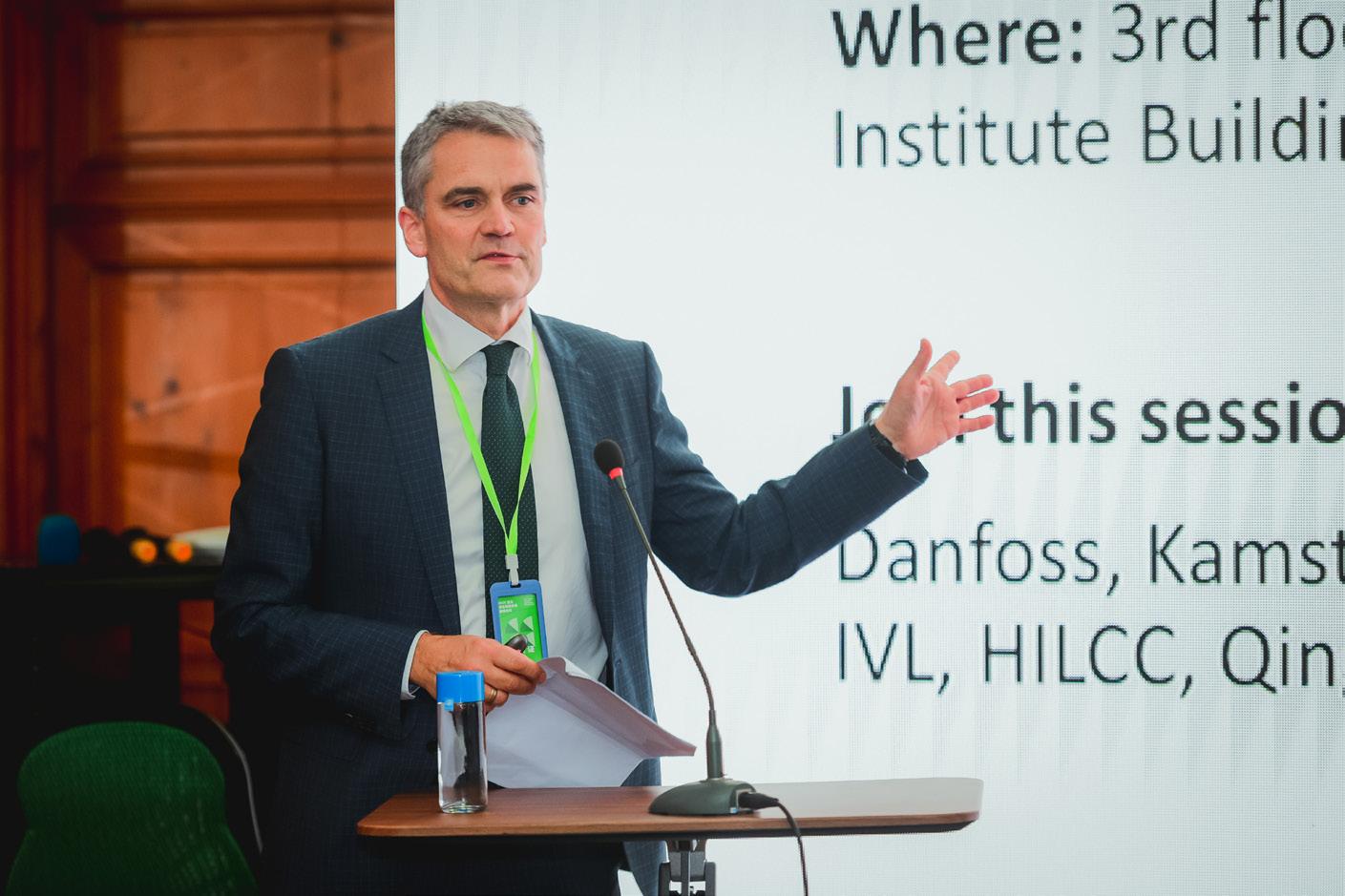






AS A GOLD SPONSOR OF THE ASIA URBAN ENERGY ASSEMBLY IN BANGKOK IN SEPTEMBER, WHAT ARE YOUR GOALS, AND EXPECTATIONS DURING THE EVENT?
Promoting District Energy for a Sustainable City Transformation DBDH is Denmark’s leading district heating & cooling business association representing all sector actors: heat and combined heat & power production companies, waste incineration companies, heat transmission, and distribution companies, consulting engineers, manufacturers & contractors. In Denmark, 63% of the population enjoys being connected to clean and efficient district heating systems. The Danish technology and experience are presented worldwide by DBDH.
www.dbdh.dk
This
Magazine
14
www.apuea.org APUEA Magazine 14 28
CoolingDistrictTECHNOLOGIES





























Meet the







MINISTRY OF FOREIGN AFFAIRS OF DENMARK The Trade Council
Danish district cooling technology experts at the Asia Urban Energy Assembly: APUEA Magazine 14 29
In 2021, APUEA launched the APUEA Academy with the purpose of offering support to cities in the Asia-Pacific region to speed up the development of sustainable Urban Energy projects by offering capacity building and professional and vocational training on Urban Energy topics. The APUEA Academy was launched in collaboration with Heat Academy International which is providing training on Urban Energy related topics in Europe and North, and South America. The first activity of the APUEA Academy was to deliver an introduction to District Cooling course to the City of Pune in India.
As part of our collaboration, Heat Academy International will join the Asia Urban Energy Assembly as a Gold Sponsor. Ahead of the event, we sat down with CEO, Peter Anderberg, to get more insights on the background, vision, and goals of Heat Academy and the related capacity building services in Nordic Heat and Heatnet Global. We also discussed the importance of exchange of knowledge, and the opportunities for broader collaboration between Europe and the markets in the Asia-Pacific region.
Peter Anderberg
Founder, and CEO at Heat Academy, Nordic Heat & Heatnet BYGlobalAPUEA SECRETARIAT INTERVIEW WITH
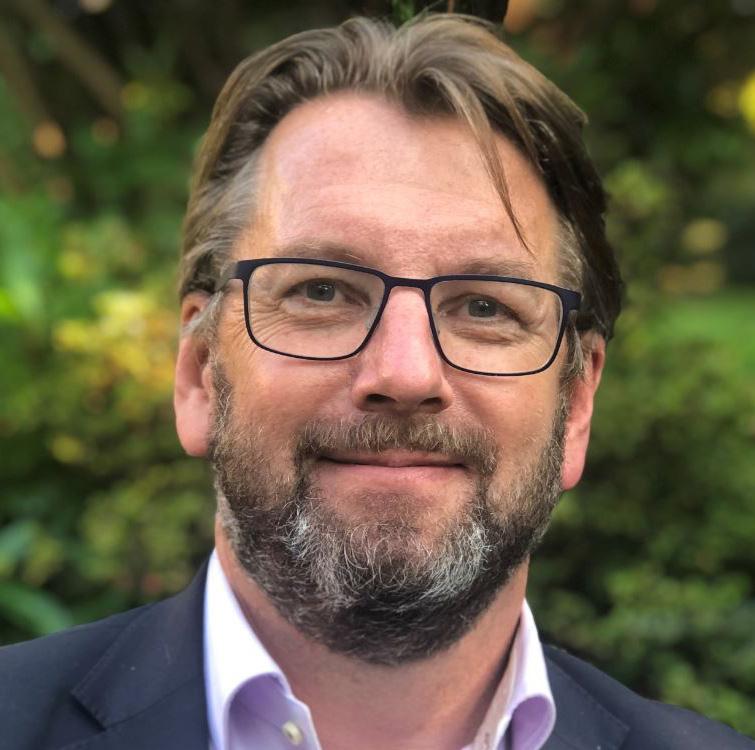


I SEE ENORMOUS POTENTIAL FOR DISTRICT ENERGY IN ASIA, ESPECIALLY, DUE TO GEOGRAPHICAL REASONS, FOR DISTRICT COOLING. I THINK, FROM A POPULATION DENSITY PERSPECTIVE, DISTRICT ENERGY IS MORE SUITABLE IN MANY PARTS OF ASIA THAN FOR EXAMPLE IN SCANDINAVIA WHERE THESE SYSTEMS HAVE EXISTED FOR A LONG TIME. HIGH POPULATION AND ENERGY DENSITY FAVOR CENTRALIZED SOLUTIONS LIKE DISTRICT ENERGY, AS YOU NEED TO INVEST LESS IN THE DISTRIBUTION NETWORK.
“
CAN YOU MAKE AN INTRODUCTION TO YOURSELF AND THE HEAT ACADEMY INTERNATIONAL?

The Heat Academy is part of a series of activities that also include Nordic Heat and Heatnet Global, all focusing on capacity building to support decarbonisation of heating and cooling. At the Heat Academy, we develop and deliver professional and vocational training in collaboration with local universities and colleges.
At Nordic Heat, we facilitate exchange of best practices from business modelling and stakeholder involvement to design, procurement, and installation, and into operations and further expansion. Finally, at Heatnet Global we support market entry for suppliers and the development of local supply chains. We launched these activities in 2014 and are now active in thirty markets, in collaboration with local Ipartners.haveextensive
operational experience in the sector of decarbonising heating and cooling including the various solutions deployed, e.g., heat networks, heat pumps, digital technologies, and energy efficiency retrofit solutions for buildings. Earlier in my career, I was Managing Director at Alstom Flow Systems which was a producer of pre-insulated pipes. This company, during my time, merged with a competitor and became Logstor.
I was responsible for the company in Sweden and a number of European markets until 2012. The reason we started Nordic Heat and later the Heat Academy and Heatnet Global, was because we saw that the Nordic District Energy markets were becoming saturated in terms of installations of heating networks, and thus pipes. In fact, the entire sector was looking into ways to maintain and increase sales and to do this, we needed to look at other markets. The interest in
“
APUEA Magazine 14 30
District Energy was significant all across Europe; however, the problem was that many projects did not pass the feasibility study phase. The reason for this was that projects became expensive and risky. So, the idea of Nordic Heat, and the Heat Academy was to share best practices from the Nordic Countries and help take projects from initial vision into delivery and operation. By bringing in experienced staff from the Nordics as active advisors and critical friends it became possible to significantly reduce costs and risks, and to strengthen up the business case.
Our role is not to replace the regular engineering consultants. We are a buyer’s side service reinforcing project teams, and owners, with the aim of speeding up delivery of decarbonisation projects. It turned out there was a significant demand for this particular service. We started in the UK market and have since expanded to other markets in Europe and
Afterbeyond.some
time, we noted that there is a significant lack of capacity in the supply chain of decarbonisation solutions. There is a shortage of people with the theoretical and practical know-how and

experience to design, install, and operate the systems. Furthermore, there is not enough capacity in the local supply chain. This combination makes projects unnecessarily costly and risky. To address the lack of people, we launched the Heat Academy with the initial partners being a college and a university in Stoke on Trent,
TheUK.
training centre offered both vocational and professional training. This initiative was extremely well received. We saw the opportunity to further develop and set up similar training platforms in other parts of the UK in collaboration with local universities. Today we have three training centres in the UK: one in Scotland in collaboration with the University of St Andrews, one in Stoke on Trent in collaboration with Stoke Collage and Staffordshire University, and one in Wales in collaboration with Bridgend College.
In these training locations, we have also established Heatnet business hubs, with the role of facilitating market entry and matchmaking with local customers and

Thepartners.UKhas

the ambition to take District
Heating from 2 percent to 20 percent in the next 20-25 years. Based upon the Nordic experience this would represent some 25 million, 12-meter-long pipes to be
Theinstalled.question
to ask is who will make the practical installation of all these pipes, the ground preparation, welding, digital installations, system optimization, etc.? And this is just the pipes. What about staff to install heat pumps, boilers, heat exchangers, metering solutions, etc.?
Generally speaking, I think that we have underestimated the need to train people to be ready to install and operate all these systems in order to manage the energy crisis and the climate crisis. You could regard this as a challenge, an
Butobstacle.youcan equally see it as an opportunity to create thousands of new jobs, a new industry sector. We have chosen the latter and are doing our utmost to expand to meet the demand.
APUEA Magazine 14 31
HOW HEAT
ACTIVITIESANDINTERNATIONALACADEMYWORKS,WHATARETHEMAINANDGOALS?
Many universities have realized that there is a need to generate a curriculum when it comes to training in this space but that they lack experience in these topics. What we bring to the table are pre-made professional and vocational training modules with content that is needed when, for instance, installing pipes for District Heating and District Cooling networks. We have created similar training modules focusing on other related topics – heat pumps, energy efficiency retrofit in buildings, geothermal heating solutions, and wastewater heat recycling, to mention just a few. To some extent, there is a need to adapt these training packages to local conditions. But most of the content can be reused. This is the value proposition that we bring to universities and colleges. We also help universities train the trainers so that they can deliver the training courses themselves. And with many universities active in a country, they can also start collaborating and sharing best practices between themselves. This further supports the ambition to speed up training to support our overall goal, which is to speed up decarbonisation of heating and cooling. The best way to do this is to have an industrial approach, to standardize, and create copy-paste methods that can be used in many different locations and projects. This way costs and risks can be reduced, and the financial returns increased. Even more importantly this will give access to sustainable and affordable heating and cooling for residents and businesses. Not to mention the socio-economic benefits in terms of local jobs and social welfare. Collaboration is critical to achieve this. Our ambition is to make Heat Academy, together with our other activities, a platform facilitating collaboration between the key stakeholders in the sector, locally and globally.
WHAT ARE THE GEOGRAPHIC FOCUS AREAS OF HEAT ACADEMY ACTIVITIES?INTERNATIONAL’S
We see Europe as our home market, where we have most of our activities. We
have or are in the process of establishing physical hubs for training and business basically in all key markets in Europe. We cover the Nordic region and the UK, where we have three training locations. In central Europe, we have activities in Belgium, the Netherlands, Switzerland, and Italy. In the east, we have activities in Poland and recently also in Ukraine. We are in the process of establishing a presence in France, Spain, and Germany. In the last year, we have also created training opportunities and partnerships in the US, New York City, and Canada in two locations in the greater Toronto area. Then, finally, Asia is an interesting market where we collaborate with APUEA, and also with NXITY which has a strong presence in the Asian market.
HOW ARE COMPANIES
WORKING WITH YOU, AND HOW DO THEY USE HEAT ACADEMY BUSINESS?ACTIVITIESINTERNATIONAL’SINTHEIR
First, I want to emphasize that Heat Academy and the related activities Nordic Heat, and Heatnet Global are completely independent. We have never received any government subsidies from any country. We have been able to finance our activities by ourselves through the services that we offer. This is important to us, as we want to be seen as a neutral player when it comes to technology and suppliers. We are a buyer’s side service. Customers and partners can trust that the advice given is completely unbiased when it comes to selecting suppliers of technologies and services. Performance, reliability, and total cost of ownership are always the key criteria when suggesting a Still,solution.wedo
have a strong collaboration with the supply chain, both large international suppliers, but also local suppliers in each market. We bring them into our activities, and they provide a lot of support to the training activities. They also see their opportunities to utilize Heat Academy, and Heatnet platforms, to reach markets more efficiently, compared to if they were going at it alone. Following “the-weakest-link” rule it is, however, critical to us, and to our customers and partners, to only involve best-in-class suppliers in the network. I also want to mention that we act as a platform facilitating matchmaking between
suppliers. Using Lego as an analogy, the market is moving from bricks to kits. A system-solution approach, involving a combination of technologies is rapidly making its way. Combining technologies, digital solutions, and services into predefined modules makes it possible to improve performance while reducing costs. This is an area where we can offer support to the suppliers to facilitate these kinds of partnerships.
CAN YOU DESCRIBE THE BENEFITS OF DISTRICT ENERGY, AND HOW IT PLAYS AN IMPORTANT ROLE TO DECARBONIZE HEATING AND COOLING?



Heating is the elephant in the room when it comes to carbon emissions. Heating represents some 30-35 percent or more of all CO2 emissions in many countries. In countries like the UK, Germany, and Italy, 90 percent of the heating is generated from natural gas, 40% of which was until recently directly or indirectly imported from Russia. This means that not only do we have a climate crisis, but we also have an energy crisis. And to address this, heating is a low hanging fruit. The question is, what technologies and solutions should we use in the energy transition away from fossil fuels? We address this question in 3 steps, Conserve, Connect, and Convert. By conserve we address how buildings can become more energy efficient through better insulation, digital solutions to optimize the use of heat, wastewater heat recycling, etc. Convert addresses the sourcing of heat (or cooling). In some cases, it could be optimal to install a heat pump. In most cases, it would be more efficient to connect the house to an external and shared heat source. In the third step, which we call convert, we explain that the more buildings we connect to a heat (or cooling) network, the more options we have in terms of sources. If connecting just a few buildings, heat sources are limited. If connecting a large number of buildings in a heat network, heat sources can include deep geothermal energy, industrial waste heat, sewage systems, or energy from waste solutions.
DO YOU HAVE RECOMMENDATIONSANY ON ACTIVITIES THAT

CAN YOU DESCRIBE
CANAPUEAMagazine 14 32
HELP TO SPEED UP THE DEVELOPMENT OF DISTRICT ENERGY?
I think we need to standardise more in our sector, and cities that are thinking of implementing District Energy solutions should start to look at cities that have already started doing this, or perhaps have done this for many years. There is no need to re-invent the wheel, and I think cities should feel free to copy existing solutions and best practices and adapt them to their specific requirements. Most of these solutions and technologies are already developed and mature, so I think we over-emphasize the need for innovation. I think we need more focus on implementation than innovation. Another important thing is how to develop the local capacity in developing, designing and delivering. The feasibility study is the easy bit. The real challenge is to get it installed in a low-cost but high-quality, high-performing way. To do this, at scale, we need good suppliers and trained manpower, locally, where the investments are made. This will also reinforce the full range of benefits of decarbonising heating: mitigating climate change and the energy crisis while improving balance of trade, attracting inward investments, generating new jobs, offering new career opportunities and strengthening social welfare. I think it is very important to think long-term and to look at how we can secure the capacity that is needed to live up to our commitments in terms of climate and energy security. Failing this, this critical process will be further delayed.
ARE THERE ANY SPECIFIC BARRIERS THAT HINDER THE DEVELOPMENT OF DISTRICT ENERGY SYSTEMS?

I think it is very important to secure buy-in from all key stakeholder groups - the decision and policy makers, the customers and developers, the local business community and the broader community, including NGOs, universities and colleges. There are many challenges to overcome when implementing these solutions, and some things will go wrong. Nevertheless, we need to have the stamina to stay the course. Up-front training of decision makers and key influencers is critical and a key role of the Heat Academy. These stakeholders also need to be onboard to secure funding and
get investors interested in projects, as they want to see stability and long-term plans. These aspects are critical in my mind. Another challenge is the ownership models. There is often a focus on the engineering side of projects. We need to spend more time on how to develop solid business cases.

HOW DO YOU SEE THE POTENTIAL FOR DISTRICT ENERGY DEVELOPMENTS IN THE ASIA PACIFIC REGION?

I see enormous potential for District Energy in Asia, especially, due to geographical reasons, for District Cooling. I think, from a population density perspective, District Energy is more suitable in many parts of Asia than for example in Scandinavia where these systems have existed for a long time. High population and energy density favour centralized solutions like District Energy, as you need to invest less in the distribution network.
AS A GOLD SPONSOR OF THE ASIA URBAN ENERGY ASSEMBLY IN BANGKOK IN SEPTEMBER, WHAT ARE YOUR GOALS, AND EXPECTATIONS DURING THE EVENT?
The way we have built our activities during the past eight years has been through networking and establishing collaboration with partners in different markets. Our aim in coming to Bangkok is to meet nexisting partners partners and to connect and establish direct relationships with new partners. We also want to share our competence as well as learn more about local conditions and bring more knowledge to partners in our network. But it is not a one-way street, we want to provide a platform enabling active collaboration and a fluid exchange of experiences. We hope to get more Heat Academy and business hubs running together with local partners. We are also bringing a number of companies that are already part of the Heatnet network. They are of course interested to meet up with potential new customers and partners with whom they can develop more business in the Asia-Pacific region.

APUEA Magazine 14 33
Capacity building services to accelerate decarbonisation of Heating and Cooling


The overriding aim of Heat Academy International and related activity areas is to act as a facilitator enabling cities and regions to accelerate investments in solutions to decarbonise heating and cooling, thereby meeting overall net-zero targets by 2050. This is achieved through a range of services specially tailored to assist in the process of rapidly developing the local capacity to deliver affordable decarbonisation solutions at scale.
THE HEAT ACADEMY is an international training, collaboration and innovation platform offering a modular training concept in a broad range of topics related to decarbonisation of heating and cooling. The mission is to address the competence and capacity gaps in the sector by offering hands-on training and facilitating collaboration and sharing of best practice. The Heat Academy is a fully independent organisation based on a collaborative model involving partnerships with local colleges, universities, public institutions, energy operators, investors and the wider supply chain.

NORDIC HEAT is an independent peer-to-peer advisory and resource pooling service offering strategic and operational services to speed up delivery of projects to decarbonising heating and cooling. By sharing the extensive operational know-how and experiences developed in the Nordic countries during the past 50 years, Nordic Heat can assist project teams, investors, developers, and other key stakeholders in reducing costs and risks, while increasing the environmental and financial returns of investments.

HEATNET GLOBAL is an activity addressing the rapidly emerging capacity gaps in the supply chain of systems and services related to sustainable heating and cooling solutions. The company provides a range of services to facilitate access to new markets by opening its extensive network of well-connected local partners in targeted markets, e.g., market research, match-making activities, local business hubs, recruitment services, and modular platforms.




For more information, send a mail to register at register@heatacademy.eu
This article was published in the APUEA Magazine issue 14 September 2022. www.apuea.org
APUEA Magazine 14 34



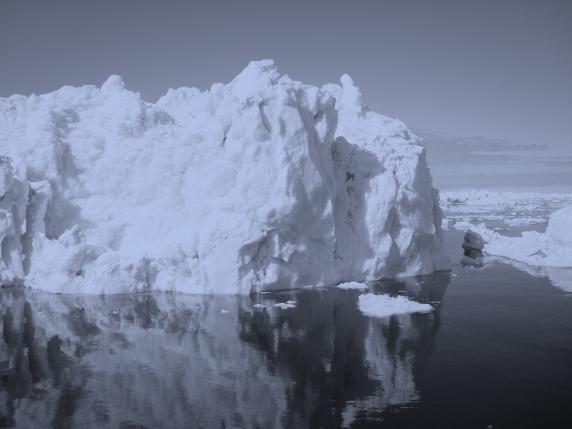





Let’sTogetherDecarbonise Bridging the Gap to the Future Capacity BuildingBestServicesPractice Peer to Peer Advisory services Exchanging know how and experiences, and replicating best practice SupplyTechnologiesChainservices Facilitating market entry, recruitment and local matchmaking Skills Training and Innovation services Professional & Vocational Training and local Innovation platforms register@heatacademy.eu APUEA Magazine 14 35
CALENDAREVENT
FOCUS EVENT
LIVE EDITION SEP 2022 E AWARDS & ASI A URBAN ENERGY ASSEMBLY DISTRICGLOBA CLIM AT
Bangkok, Thailand
APUEA EVENTS APUEA SUPPORTED EVENTS
ACCELERATE OPTIMIZING YOUR ASSET LIFECYCLE: BEST PRACTICES IN THAILAND 4.0 Pattaya, Thailand 26 AUGUST 2022

FUTURE OF ENERGY WEEK Singapore 19-21 SEPTEMBER 2022AUGUST21
DISTRICT COOLING: ACCELERATING VIETNAM’S TRANSITION TOWARDS SUSTAINABLE GROWTH Ho Chi Ming City, Vietnam 08 SEPTEMBER 2022
AUGUST
MAINTENANCE, INDUSTRIAL, ROBOTICS, AND AUTOMATION MIRA Pattaya, Thailand (Supporting organization) 24-26 AUGUST 2022 -
HVACR VIETNAM Ho Chi Ming City, Vietnam (Supporting organization) 07-09 SEPTEMBER 2022 07 - 09
SEPTEMBER
ENABLING THE ENERGY TRANSITION WITH SMART CITIES, DISTRICT ENERGY AND Bangkok, Thailand 14 SEPTEMBER 2022
CAMPUS ENERGY AUSTRALIA Melbourne, Australia 27 SEPTEMBER 2022
ASEAN SUPER 8 Kuala Lumpur, Malaysia (Supporting organization) 14-17 NOVEMBER 2022September10
SEPTEMBER
ASEAN SUSTAINABLE ENERGY WEEK (Conference partner) 14-16 SEPTEMBER 2022 -
ELECTRIC & POWER INDONESIA Jakarta, (SupportingIndonesiaorganization) 14-17 SEPTEMBER 2022 - 17
14
SEPTEMBER16
14
15-16
T ENERGY
L
7 T H
24
NOVEMBER26
08
DISTRIBUTED-ENERGY
14SEPTEMBER
19
26SEPTEMBER
27September
08
36

APUEA Magazine 14 37
DIRECTORYMEMBER




InternationalABB




 District Energy Association
Engie Johnson Controls & Power (EHP)
Alliance to Save Energy Qatar Cool
Danish Board of District Heating (DBDH) Clean Energy Council (NECEC)
DEVCCO Thai ESCO Association
Overseas CooperationEnvironmentalCenter(OECC)
Institute for Sustainable Energy Policies tabreed Chongqing Renewable Energy Society Tera
Kamstrup
SIVECO China Fengxi New Energy
IVL Swedish Environmental Research Institute
Alliance for an Energy Efficient Economy (AEEE) Asia LEDS Partnership
Black and Veatch
KJTS Group
China District Heating Association
District(CDHA) in Cities Initiative DHCS
District Energy Association
Engie Johnson Controls & Power (EHP)
Alliance to Save Energy Qatar Cool
Danish Board of District Heating (DBDH) Clean Energy Council (NECEC)
DEVCCO Thai ESCO Association
Overseas CooperationEnvironmentalCenter(OECC)
Institute for Sustainable Energy Policies tabreed Chongqing Renewable Energy Society Tera
Kamstrup
SIVECO China Fengxi New Energy
IVL Swedish Environmental Research Institute
Alliance for an Energy Efficient Economy (AEEE) Asia LEDS Partnership
Black and Veatch
KJTS Group
China District Heating Association
District(CDHA) in Cities Initiative DHCS
PREMIUM MEMBERS PARTNERS AND SUPPORTING ORGANIZATIONS • Asian Development Bank (ADB) • International Energy Agency (IEA) • United Nations Environment • Asian Infrastructure Investment Bank (AIIB) • REN21 • C40 Cities MEMBERS
(IDEA)
Euroheat
Northeast
NXITY
Energy
Keppel
38
Organization name Marketing name and/or Abbreviation PostalStreet code City Countr y General Phone General Fax General E-mail Web Primar y Contact: First name Surname Position Direct Phone E-mail Bank Transfer Credit Card Paypal Please indicate preferred payment method. Payment instructions will be provided following confirmation of membership Association / Federation AdvisorAcademicNGO-Financial / Legal / Banking Consultancy - Engineering / Design / Technical Specify: Manufacturer / Equipment Supply Utility / Operator Media company - Press / Journalist / Advertisement Building Sector Other Member Category Premium Member Corporate Member Affiliate Member ≤ 1,000 1,000 - 10,000 Employees ≥ 10,000 Billing Address: ORGANIZATION / COMPANY DETAILS:1 ORGANISATION CATEGORY (please check as appropriate below):2 BILLING INFORMATION (if de rent from above):3 MEMBERSHIP CATEGORY (please check as appropriate below):4 PAYMENT METHOD:5 You can print out your registration and entry form below. APUEA REGISTRATION FORM - MEMBERSHIP WE, THE UNDER-MENTIONED ORGANISATION / COMPANY, HEREBY APPLY TO BECOME A MEMBER Please complete the form, and send a scanned version to info@apuea.org APUEA Magazine 14 39

No.14 / September 2022 APUEA Magazine
